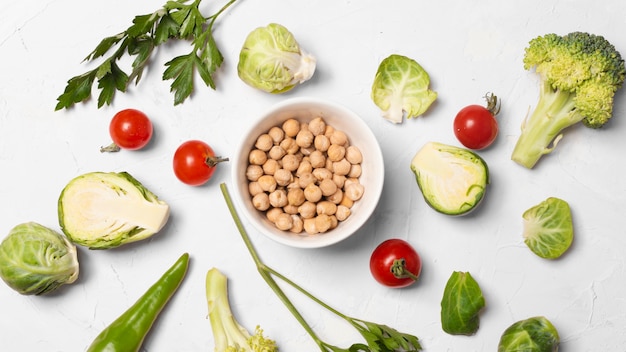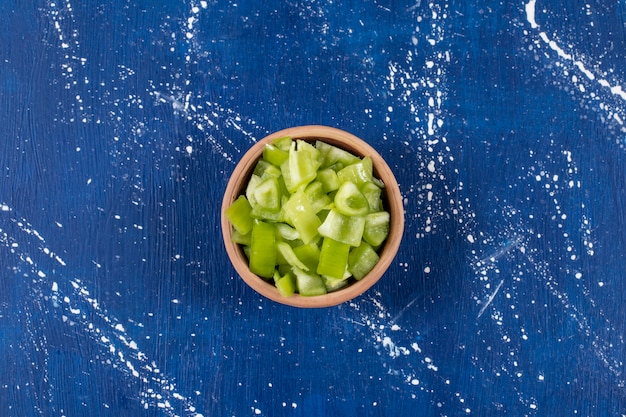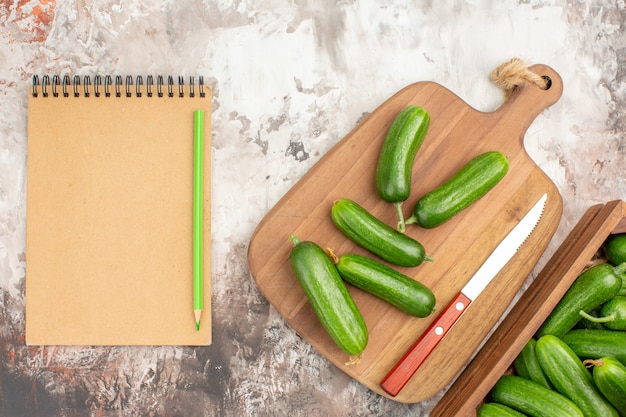Peas, those little green orbs of delight, have a way of sneaking into our hearts (and stomachs) with their subtle sweetness and versatility. Whether you're tossing them into a vibrant salad, adding them to a comforting stew, or simply enjoying them as a simple side dish, perfectly cooked peas elevate any culinary creation. But achieving that "just right" texture, the kind that bursts with flavour and melts in your mouth, can be a bit of a culinary mystery. You know the struggle – the mushy pea, the crunchy pea, and the dreaded overcooked, grey pea, a culinary crime against nature! Fear not, my fellow foodie, because this is your ultimate guide to conquering the art of cooking peas to perfection. It's a journey we'll embark on together, filled with tips, tricks, and, of course, a healthy dose of my own personal kitchen adventures (which, let me tell you, have included more than a few pea-related disasters!).
(Part 1) The Pea Primer: Choosing the Right Peas

Peas: A Quick Overview
Before we jump into the cooking process, let's get to know our star ingredient a bit better. You see, not all peas are created equal. Think of it like a pea family tree, with two main branches: garden peas and snow peas. Garden peas, the ones we typically think of when someone says "peas," are those little green spheres you find in the freezer aisle or fresh produce section. They're the ones we'll be focusing on in this guide. Snow peas, on the other hand, are flatter and more elongated, and you'll often find them stir-fried or adding a delightful crunch to salads.
Fresh vs. Frozen: A Pea-sonal Preference
Now, the big question: fresh or frozen? It's a matter of personal preference, but I'm a big fan of both. fresh peas, when in season, are a true culinary treasure. They possess a vibrant green colour and a flavour that simply bursts with freshness. However, finding them can be a bit of a quest, and their shelf life can be fleeting. Frozen peas, on the other hand, are readily available year-round, maintaining their flavour remarkably well. Plus, they're already blanched and frozen, making them a lifesaver for busy cooks like myself.
Choosing the Best Peas
Whether you choose fresh or frozen, here are some tips to ensure you're selecting the best peas:
- Fresh Peas: Look for pods that are plump, bright green, and free from any blemishes or bruises. Avoid any pods that feel limp or have discoloured spots. These are signs that they've been sitting around a bit too long.
- Frozen Peas: Opt for a brand that's known for quality. The peas should be bright green and free from ice crystals. Avoid any bags with frost or discolouration. This indicates they haven't been stored properly.
(Part 2) The Perfect Pea: A Matter of Texture

A Tale of Two Pea Textures
Let's talk texture – a critical element in achieving pea perfection. Everyone has their own ideal, some prefer a slight firmness, while others crave that almost melt-in-your-mouth tenderness. Here's a quick breakdown of the two main pea textures:
| Texture | Description | Ideal for |
|---|---|---|
| Firm | The peas retain their shape and have a slight crunch when bitten into. They're like little green jewels, adding a satisfying bite to your dish. | Salads, stir-fries, and dishes where you want the peas to retain their shape and add a delightful crunch. |
| Tender | The peas are soft and easily mashed with a fork. They're a blank canvas, ready to absorb the flavors of the dish they're in. | Soups, stews, and dishes where the peas will be cooked for a longer time and will contribute to the overall texture and flavor of the dish. |
The Art of Achieving Perfect Pea Texture
So, how do you achieve the perfect pea texture? It all boils down to cooking time (pun intended!). Overcooked peas become mushy, while undercooked peas can be tough and crunchy. Finding that sweet spot where the peas are tender but still retain their shape is like striking culinary gold. I've found that for fresh peas, a quick blanching in boiling water followed by an ice bath is the key. For frozen peas, I usually opt for a quick steam or a gentle simmer.
(Part 3) Cooking Peas to Perfection: Techniques and Tips

Boiling Peas to Tenderness
Boiling is a classic method for cooking peas, and it's surprisingly effective. Here's my tried-and-true method:
- Fill a pot with water and bring it to a rolling boil. Think of it as a hot bath for your peas.
- Add the peas to the boiling water. For fresh peas, I usually cook them for about 2-3 minutes. For frozen peas, 3-4 minutes is usually enough. Don't overcook them!
- Drain the peas and immediately plunge them into an ice bath. This stops the cooking process and helps retain that beautiful, vibrant green colour. Think of it as a quick "shock" treatment.
- Pat the peas dry and use them in your favourite recipe. They're ready to shine!
The Power of Steaming: Gentle and Flavourful
If you're looking for a gentler approach to cooking peas, steaming is an excellent option. It's a bit like giving your peas a spa treatment, keeping them moist and flavourful.
- Fill a pot with water and bring it to a simmer. Not quite a rolling boil, just a gentle simmering.
- Place a steamer basket over the simmering water. This will create a steamy haven for your peas.
- Add the peas to the steamer basket. For fresh peas, I steam them for about 2-3 minutes. For frozen peas, I usually steam them for 3-4 minutes.
- Remove the peas from the steamer and use them in your recipe. They'll be tender and bursting with flavor.
Microwaving: A Quick and Easy Option
For those nights when you're short on time and need a quick and easy solution, microwaving is a convenient option.
- Place the peas in a microwave-safe bowl. Make sure it's a bowl that can handle the heat.
- Add a tablespoon or two of water to the bowl. This will create a little steam to help cook the peas.
- Microwave the peas on high power for 1-2 minutes, or until tender. Keep a close eye on them, as microwaves can vary in power.
- Use the peas in your favourite recipe. They're ready to add a pop of flavor and colour to your dish.
(Part 4) Beyond Basic: Adding Flavour to Your Peas
Pea-fect Pairings: Herbs and Spices
Just like any other ingredient, peas can be elevated with the right herbs and spices. They act like little flavor enhancers, adding depth and complexity to the simple pea. Here are a few of my favourite combinations:
- Mint: A classic pairing for peas. It adds a refreshing, slightly sweet flavour, creating a perfect summery combination.
- Dill: Another great herb for peas. It adds a subtle anise flavour, a touch of warmth to the peas.
- Tarragon: This herb gives peas a unique, slightly licorice flavour, a bit of an unexpected twist.
- Lemon: A squeeze of lemon juice adds a bright, tangy flavour to peas, cutting through any sweetness and adding a touch of brightness.
- Garlic: A touch of garlic adds a savoury and pungent flavour to peas, creating a warm and inviting aroma.
- Black Pepper: A sprinkle of black pepper enhances the flavour of peas and adds a touch of heat, bringing out the subtle sweetness of the pea.
The Art of Sauteing: Adding Depth and Flavour
For a truly flavourful side dish, I often saute peas with butter, garlic, and a pinch of salt and pepper. The butter adds a rich, buttery flavour, while the garlic adds a pungent aroma. The heat of the pan creates a caramelized flavour, taking the simple pea to a whole new level. I usually cook them until the peas are tender and slightly browned.
(Part 5) Pea-licious Recipes: Inspiration for Your Next Meal
Simple and Delicious: Pea Salad with Mint and Lemon
This salad is a perfect summer dish that's light, refreshing, and bursting with flavour. It's simple to make and perfect for a quick lunch or side dish.Ingredients:
- 1 cup cooked peas (fresh or frozen)
- 1/2 cup chopped fresh mint
- 1 tablespoon lemon juice
- 2 tablespoons olive oil
- Salt and pepper to taste
- Combine the peas, mint, lemon juice, olive oil, salt, and pepper in a bowl.
- Toss to coat the peas evenly.
- Serve immediately or chill in the refrigerator for later.
Comforting and Hearty: Pea and ham soup
This soup is perfect for a cold winter day. It's creamy, comforting, and packed with flavour. The ham adds a smoky depth, while the peas provide a subtle sweetness. Ingredients:
- 1 tablespoon olive oil
- 1 onion, chopped
- 2 carrots, chopped
- 2 celery stalks, chopped
- 4 cups vegetable broth
- 1 cup cooked peas
- 1/2 cup chopped ham
- Salt and pepper to taste
- 1/2 cup heavy cream (optional)
- Heat the olive oil in a large pot over medium heat.
- Add the onion, carrots, and celery and cook until softened, about 5 minutes.
- Pour in the vegetable broth and bring to a boil.
- Reduce heat to low, add the peas and ham, and simmer for 10 minutes.
- Season with salt and pepper to taste.
- If desired, stir in the heavy cream before serving.
Quick and Easy: Peas and Pancetta Pasta
This pasta dish is perfect for a busy weeknight. It's quick, easy, and incredibly delicious. The pancetta adds a salty, smoky flavor that perfectly complements the peas.Ingredients:
- 1 tablespoon olive oil
- 4 ounces pancetta, diced
- 1/2 cup chopped onion
- 1 cup cooked peas
- 1/2 cup grated Parmesan cheese
- Salt and pepper to taste
- 1/2 pound pasta (your favourite kind)
- Cook the pasta according to package directions. Drain and set aside.
- While the pasta is cooking, heat the olive oil in a large skillet over medium heat.
- Add the pancetta and cook until crispy. This takes about 5-7 minutes.
- Add the onion and cook until softened, about 3 minutes.
- Add the peas and cook for 1 minute more.
- Add the cooked pasta, Parmesan cheese, salt, and pepper to the skillet.
- Toss to combine and serve immediately. Enjoy!
(Part 6) Pea-fect Tips for Storage and Preservation
Storing Fresh Peas: Keeping Them Fresh
Fresh peas are best used as soon as possible after purchase. If you need to store them, keep them in a plastic bag in the refrigerator for up to 3 days. However, their flavour will start to diminish after a couple of days.
Freezing Fresh Peas: Locking in Freshness
Freezing peas is a great way to preserve their flavour and texture for later use. It's like a culinary time capsule, preserving the peak of their freshness. Here's how:
- Blanch the peas: Boil the peas in water for 1-2 minutes, then plunge them into an ice bath to stop the cooking process. This is crucial for preserving their bright green colour and texture.
- Dry the peas thoroughly: Pat the peas dry with paper towels. This will prevent ice crystals from forming when you freeze them.
- Freeze the peas: Spread the peas in a single layer on a baking sheet lined with parchment paper. Freeze for 1-2 hours, then transfer the frozen peas to a freezer-safe bag or container. This helps prevent them from clumping together.
Preserving Peas: The Art of Canning
If you're looking for a longer-term storage solution, canning is a great option. It's a bit more involved, but it allows you to preserve your peas for months, even years. However, it's essential to follow safe canning practices to ensure the peas are properly preserved. There are plenty of recipes available online for canning peas, but I usually stick to freezing my peas – it's a simpler method for me.
(Part 7) Pea-riving at Your Own Perfect Pea
Now that we've explored the world of peas, it's time for you to embark on your own culinary adventure. Experiment with different cooking techniques, herbs, and spices. Don't be afraid to get creative and find what works best for you. Remember, there's no one right way to cook peas. It's all about discovering your own perfect pea and sharing it with the world (or at least your family and friends!).
(Part 8) FAQs: Your Pea-related Questions Answered
Q1: What happens if I overcook peas?
Overcooked peas become mushy and lose their vibrant green colour. They also lose their flavour and become less appealing to eat. To avoid overcooking, follow the cooking times provided in this guide and use a timer to ensure you don't cook them for too long. It's better to err on the side of undercooked than overcooked.
Q2: Can I freeze fresh peas without blanching them?
It's not recommended to freeze fresh peas without blanching them. Blanching helps to preserve the colour and texture of the peas. If you don't blanch them, they can become discoloured and mushy when frozen. Blanching is a crucial step for preserving their freshness.
Q3: What are some other ways to cook peas?
Besides boiling, steaming, and microwaving, you can also cook peas in other ways. Try roasting them with olive oil and herbs for a crispy texture, a delightful change from the traditional tender pea. Or, add them to a stir-fry for a quick and healthy meal.
Q4: How do I know when peas are cooked?
Cooked peas should be tender but still retain their shape. They should be easily pierced with a fork but not mushy. If you're unsure, taste a pea to check for doneness. It's the best way to know for sure.
Q5: Are there any health benefits to eating peas?
Peas are a good source of protein, fibre, vitamins, and minerals. They're also low in calories and fat, making them a healthy addition to any diet. Eating peas regularly may help reduce the risk of certain chronic diseases, such as heart disease and type 2 diabetes. They're a delicious and nutritious addition to any meal.
I hope this guide has inspired you to explore the wonderful world of peas. Happy cooking!
Everyone is watching

Perfect Rice Every Time: The Ultimate Guide to Cooking Rice
Cooking TipsAs a self-proclaimed foodie, I've always been a bit obsessed with rice. It's the foundation of countless cuisi...

Prime Rib Roast Cooking Time Chart: Per Pound Guide
Cooking TipsPrime rib roast. Just the name conjures images of lavish dinners, crackling fires, and hearty laughter. It’s ...

The Ultimate Guide to Cooking Asparagus: Tips, Techniques, and Recipes
Cooking TipsAsparagus. The mere mention of this spring delicacy conjures up images of vibrant green spears, crisp and burs...

Ultimate Guide to Cooking the Perfect Thanksgiving Turkey
Cooking TipsThanksgiving. Just the word conjures up images of overflowing tables laden with delicious food, the scent of r...

How Long to Bake Potatoes in the Oven (Perfect Every Time)
Cooking TipsBaked potatoes are a staple in my kitchen. They're incredibly versatile, delicious, and surprisingly easy to m...
